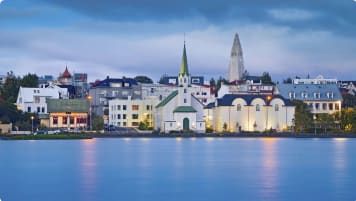The Settlement of Iceland
Marooned at the top of the globe, somewhere in the North Atlantic Ocean, lies the island nation of Iceland, a land of vivid contrasts where nature reigns supreme in her most dramatic form. Iceland is the world's oldest democracy and boasts more writer's per capita than any other country in the world. It is said that many Icelanders still believe in the mythical figures of the Norse past, such as elves, trolls and fairies, which may be due to the country's literary history including its famous sagas, epic tales based on Iceland's settlement from around 9-11 AD.
13 Jan 20 · 9 mins read
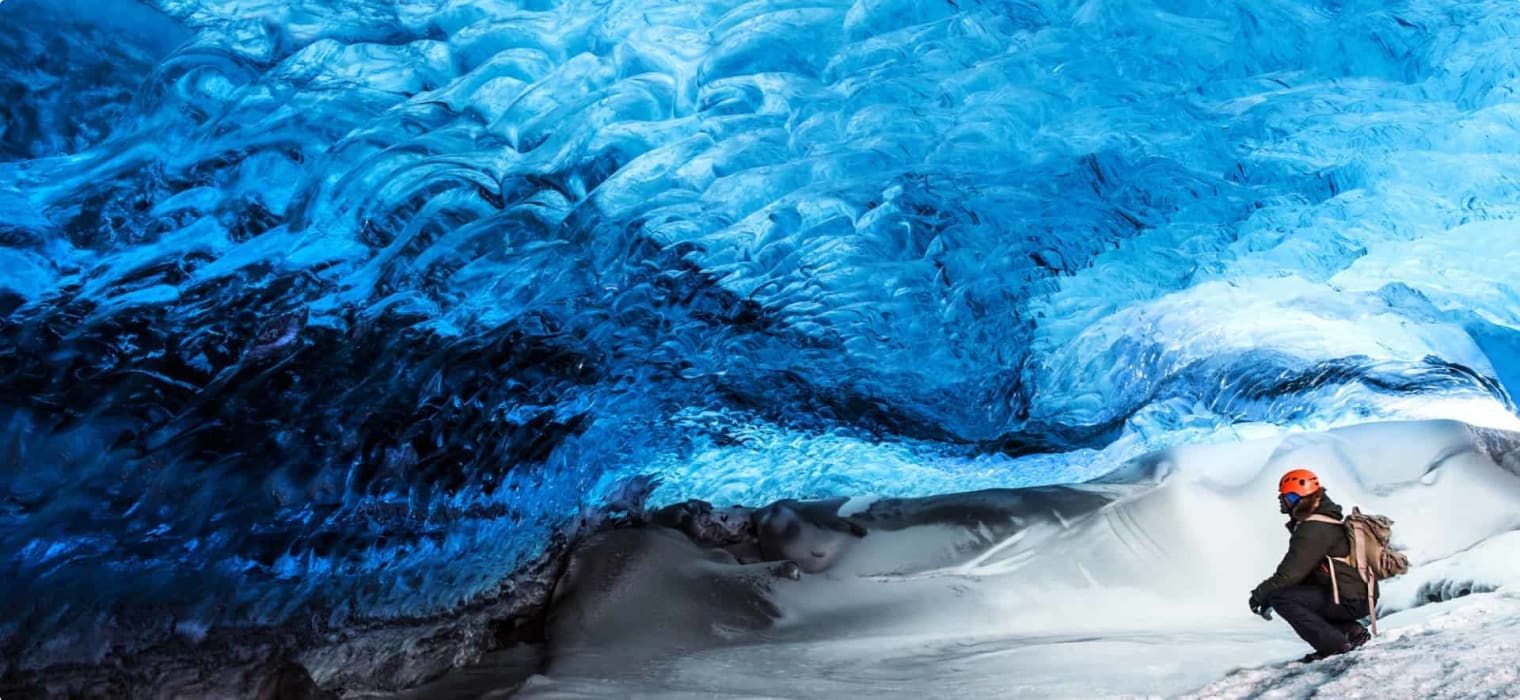
The History of the Settlement of Iceland

Marooned at the top of the globe, somewhere in the North Atlantic Ocean, lies the island nation of Iceland, a land of vivid contrasts where nature reigns supreme in her most dramatic form. Iceland is the world’s oldest democracy and boasts more writers per capita than any other country in the world. It is said that many Icelanders still believe in the mythical figures of the Norse past, such as elves, trolls and fairies, which may be due to the country’s literary history including its famous sagas, epic tales based on Iceland’s settlement from around 9-11 AD.
In this article, we will dive into the story behind these historical sagas and discover the settlement of Iceland and its earliest recorded history. This post is inspired by David Abulafia’s book The Boundless Sea (Allen Lane 2019) and articles linked throughout. If you are interested in travelling to this dazzling land of volcanos and glaciers, you may want to take a look at our Iceland Cultural and Wilderness tour, a 16-day circumnavigation of the island, designed for mature-aged or senior travellers.
Geological History
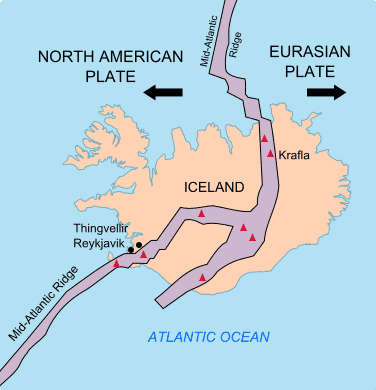
In geological terms, Iceland is considered to be a fairly young island. It is thought that it started to form in the Miocene era, about 24 million years ago as a result of a series of volcanic eruptions on the Mid-Atlantic Ridge. The Mid-Atlantic Ridge is essentially an immensely long mountain chain that stretches for around 16,ooo km from the Arctic Ocean to the southern tip of Africa. It is located at the juncture of crustal plates that form the floor of the Atlantic Ocean, the North American and Eurasian plates. Today, Reykjanes Ridge in Iceland is the only place where you can stand on the ridge on dry land, making it something of a geologist’s paradise.
The North American and Eurasian plates are moving steadily away from one another at a rate of a bout 2.5 centimetres per year and this movement can trigger volcanic eruptions or earthquakes. A hotspot that is situated under Iceland, known as the Iceland hotspot, adds to the volcanic activity in the country and is thought to be the reason for the island’s existence. The younger parts of the island, in the southwest and central highlands, are only about 700,000 years old and were formed by more recent volcanic activity.
The Mythical Thule

The Greek explorer Pytheas, who travelled between 330 and 320 BCE and wrote about it in a now lost work called On the Ocean, mentioned an island he referred to as Thule, an island at a far north location. In AD 77, Pliny the Elder published his work Natural History in which he makes reference to Pytheas’ claim that Thule is a six-day sail north of Britiain, which may explain later speculation that Thule was modern-day Iceland.
This was a claim seemingly corroborated by late classical and post-classical writers such as Orosius (384-420) and Dicuil (an Irish monk from the late 8th century) who described Thule as being somewhere north and west of Ireland. Dicuil described Thule as being beyond what is thought to be the Faroe Islands, adding weight to the belief in the Late Middle Ages that Thule was Iceland.
Today, whether Pytheas sailed for six days and made landfall on Iceland is a highly contentious point and historians and scholars have been divided over the matter for centuries. Some believe Thule is Iceland, while others argue it refers to somewhere else in Scandinavia, potentially Norway. Strabo, the Greek philosopher, quotes a description from Pytheas of his voyage north:
Here neither earth, water, nor air exist separately, but a sort of concretion of all these, resembling a sea-lung in which the earth, the sea, and all things were suspended, thus forming, as it were, a link to unite the whole together (Roseman, 125).
We can never know for sure if Pytheas was describing Iceland and the Arctic Ocean which means that ascertaining the exact date that humans first reached the island is near impossible.
The Travels of Irish Monks
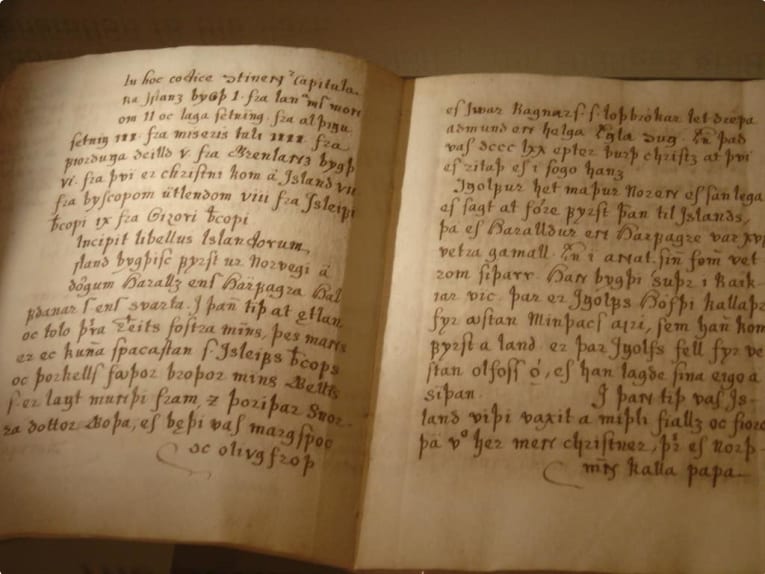
There is some literary evidence that suggests Irish monks may have settled in Iceland prior to the arrival of the Norsemen. A book written in the 1100s, known as the Book of Settlements, makes reference to the presence of Irish monks and describes how the monks left behind Irish books, bells, and crosiers, among other things. The account indicates that the monks left when Norse arrived or had already left. Settlement by monks would not generate a new colony, in the way the arrival of the Norsemen might. Another literary source, known as the Íslendingabók states that a few Irish monks, known as the Papar, left the island because they did not want to live with the Pagan Norsemen. However, no Irish artefacts have been discovered by archaeologists to corroborate these accounts that the monks were there prior to the Norsemen.
Despite this, recent archaeological excavations of the ruins of a cabin in Hafnir on the Reykjanes peninsula indicate the cabin was abandoned sometime between 770 and 880, meaning that the Iceland was populated before 874 (the generally accepted date that the first permanent settler arrived). Monks did tend to explore the oceans with no set plan of where they were heading so it is possible that a group of monks intent on finding ‘a desert in the ocean’ happened upon Iceland, but again there are little records from the time to confirm this.
Norse Discovery
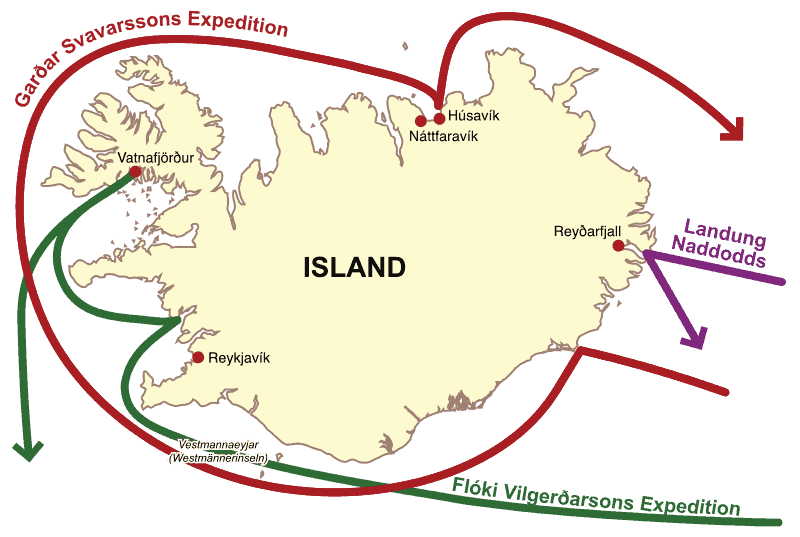
The first people who are to said to have explored Iceland came from Norway. The Landnámabók (Book of Settlements), one of the famous Icelandic sagas, describes how the first settler, Naddodd the Viking, came to be in Iceland. The story goes that in the early 9th century Naddodd was swept off course when sailing from Norway back to the Faroe Islands, where he had settled. Noticing snow on the mountains as he approached the island, he called it Snaeland or Snowland. It is said he established a settlement near present-day Reyðarfjörður but left within a year to return to Norway.
A few years after this Garðarr Svavarsson (also known as Gardar the Swede) is said to have made his way to Iceland. Gardar lived on the Danish island of Zealand and had heard of Naddodd’s travels to the mysterious Snowland. His mother, who was a sorceress, urged him to go and look for Snowland. Gardar circumnavigated Iceland, determining it was an island, and stayed for a winter on the northern coast before sailing back home. It was briefly renamed ‘Gardar’s Island’ because of this.
Next came Hrafna-Flóki Vilgerdarson (“Raven Floki”), a great Viking who sailed from Norway via the Shetland Islands to find Gardar’s Island in about 860 in the hopes of forming a new colony. He is known as Raven Floki because of the legend that he brought three ravens to help him find the precise location of the island. The first would not leave the ship, the second flew away and then returned swiftly but the third led them safely the Gardar’s Island. Floki’s trip, however, would end in disaster. Floki lost his daughter to the sea en route to the new settlement and when he arrived, his men failed to make hay and all his livestock died from lack of fodder. On top of this, Floki was forced to stay longer than he wanted on the island because of ice blocking access to the fjord he needed to sail out of and, in his frustration with the place, he named it Iceland – a name that stuck.
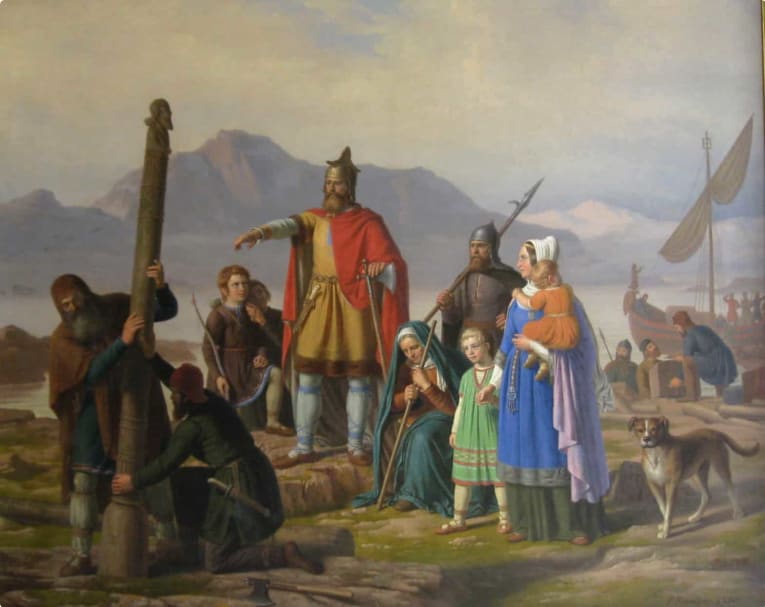
Finally, Ingolfr Arnarson, inspired by the news of Floki’s discovery, set out for Iceland with his foster-brother, a Viking raider named Hjorleif. They liked the land but did not have enough supplies to create a settlement so returned home to raise money and gather volunteers while Hjorleifr resorted to his Viking method of raiding Ireland and returning with treasure and slaves. The two men then set out again for Iceland. Ingolfr, a pious and god-fearing man, threw two carved pillars overboard as he approached the land and vowed he would settle wherever the pillars landed. He sailed along the coast until the pillars were found in where is now known as Reykjanesskagi. He settled there with his family in a place he named ‘Smoke Cove’ (Reykjarvik), most likely due to the geothermal steam surrounding the area. This spot is now the capital of Iceland: Reykjavík
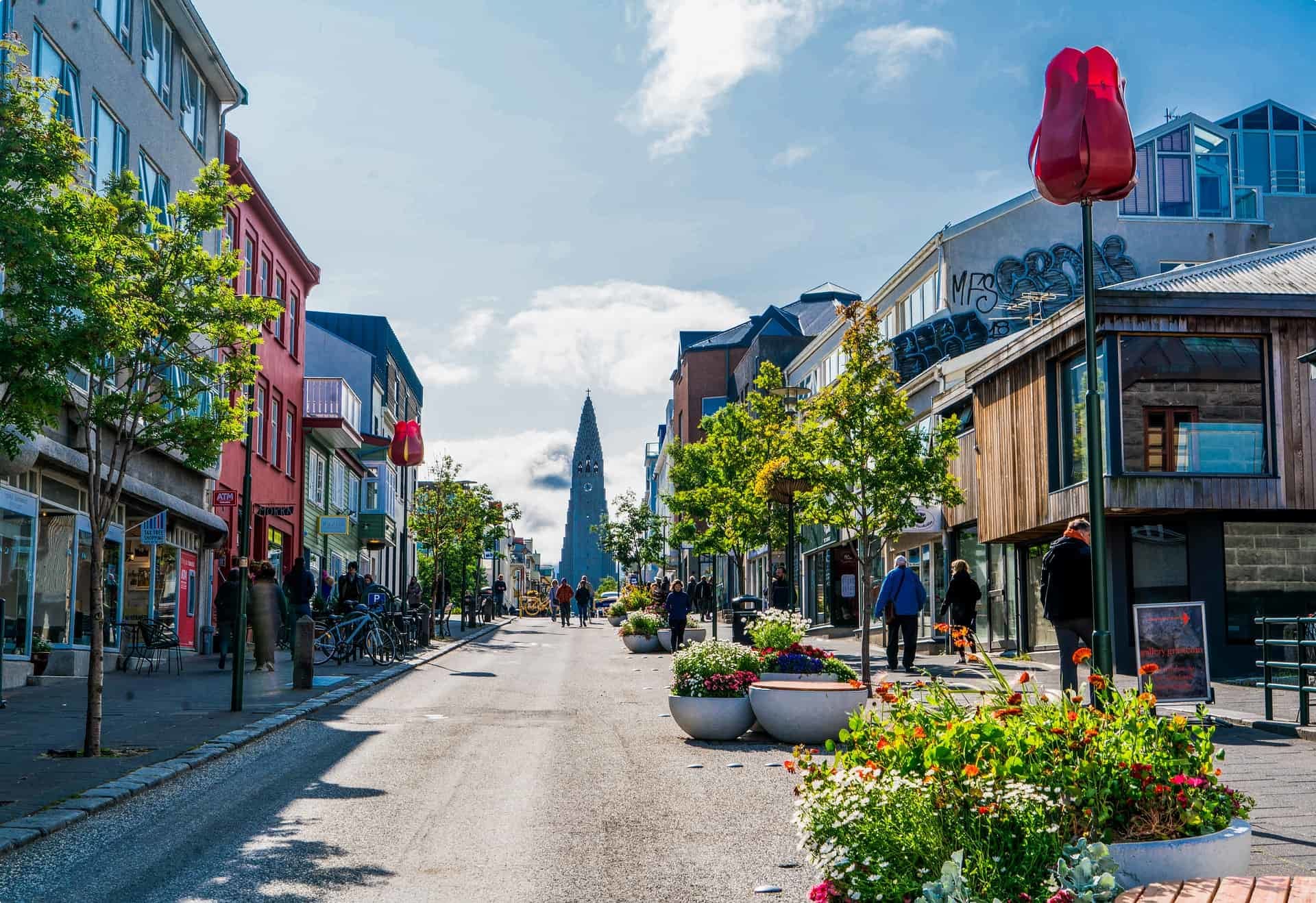
Between 870 and 930, somewhere between 10,000 and 20,000 people made their way to Iceland. Many were from Norway with many Norse chieftains, their families and slaves settling habitable areas of the land. It is believed that many went to Iceland to escape the oppressive regime of King Harald Fairhair. Danes, Swedes and those of Irish and Scottish origin were also colonists and today, DNA testing shows that 2/3 of modern male Icelanders are of Norse descent and 1/3 are of Celtic descent.
The Landnámabók tells the story of Iceland’s settlement, although it was compiled and published almost 200 years after settlement in the early 12th century. However, there is some archaeological and genological evidence to support the story laid out in the book. Both the Landnámabók and the Íslendingabók detail how Iceland was fully settled within 60 years, which likely means that all arable land had been claimed by various settlers.
The Commonwealth and Christianisation

For the first century of the island’s recorded history, many Icelanders were pagan and worshiped the Norse gods, among them Odin, Thor, Freyr, and Freyja. Pagan worship was organised around a class of chieftains known as godar and there were around 40 godar who ruled over their own goðorð (county) or the area around their farmstead. The godar formed the ruling class in the country and in 930 the godar established an assembly known as the Althing. This parliament convened each summer and the godar would amend laws, settle disputes and appoint juries to judge lawsuits. Today, the Althing is considered to be the world’s oldest existing parliament.
By the tenth century, political pressure from Europe for the country to convert to Christianity mounted. Towards the end of the first millenium, many prominent Icelanders had accepted the new faith and there were already Christians who lived there due to the settlers and slaves who had come from Ireland. By 1000, Iceland was on the brink of civil war and so the Althing appointed one of the chieftains, Thorgeir Ljosvetningagodi, to decide the issue of religion by arbitration. He decreed that the country should convert to Christianity but that pagans would be allowed to worship privately. In 1056, the first Icelandic bishop was consecrated by the bishop of Hamburg.
With the conversion to Christianity, many slaves were set free and the number of free farmers and crofters increased significantly. In terms of trade, Icelanders exported wool products, falcons, horses and later, fish. Import goods included timber, soapstone, wax and metals. The development of the Viking trading ship known as the knarr, a type of merchant ship, made trade possible as it allowed for live animals to be traded.
Around this time, Icelandic historians began to document the nation’s story in books that would become known as the sagas of Icelanders and cement Iceland’s reputation as a literary capital.
Iceland Today
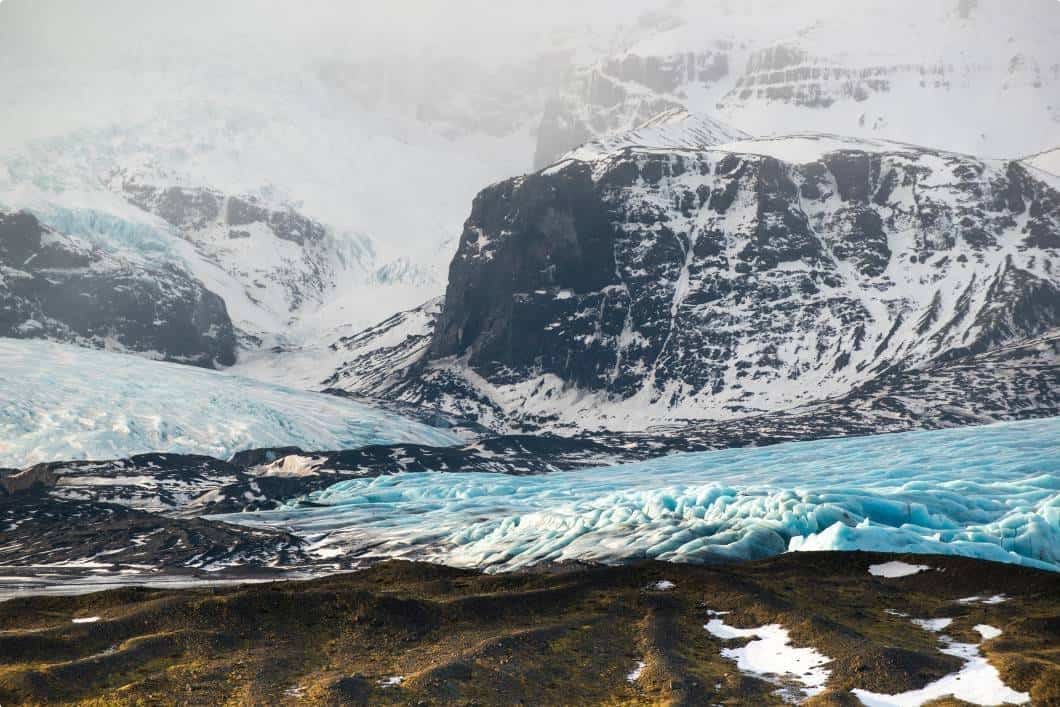
Today, Iceland has a population of 360,390 and is the most sparsely populated country in Europe. Following a period of civil strife, Iceland acceded to Norwegian rule in the 13th century. Following the French Revolution and the Napoleonic Wars, Icelanders began to agitate for independence, culminating in the country’s independence in 1918 and the founding of a republic in 1944. It is now a popular tourist destination, ranked the sixth most developed country in the world by the United Nations’ Human Development Index, and first on the Global Peace Index.
Iceland remains volcanically and geologically active and this environment makes it one of the most beautiful and interesting destinations to visit. With fantastic fjords, glittering glaciers and many other wonders, including geysers, lagoons and waterfalls, Iceland has many unique travel experiences on offer. The best way to get to the Iceland is to fly into Keflavik International Airport. Keflavik is a forty-minute drive from Reykjavik. From Australia, the best route is usually to fly via London to Iceland or via Vancouver or Chicago.
If you are interested in an Icelandic holiday, discovering Icelandic heritage and its North European roots, and seeing the sagas in real life, please take a look at our tours to Iceland.
Articles about Iceland published by Odyssey Traveller:
Visiting Iceland for Mature and Senior Travellers
Lunar Landscapes and Geology in Iceland
For all the articles Odyssey Traveller has published for mature aged and senior travellers, click through on this link.
External articles to assist you on your visit to Iceland:
Inspired by Iceland: The national tourism website
Travel + Leisure: How to travel to Iceland
Ice, Fire and Feuds: On the Trail of Iceland’s Sagas
Lonely Planet: Ten things to do in Reykjavík
Related Tours

17 days
May, SepIceland cultural and wilderness small group tour
Visiting Iceland
Our escorted tour gives guests an insight into the history of this Icelandic nation. Travelling as a small group, our daily itineraries explore the Jokulsarlon Glacier Lagoon and others, national parks and majestic waterfalls as we learn about Iceland’s natural heritage and its Viking past from experienced local guides. There is a single supplement for solo travellers.
From A$18,995 AUD
View Tour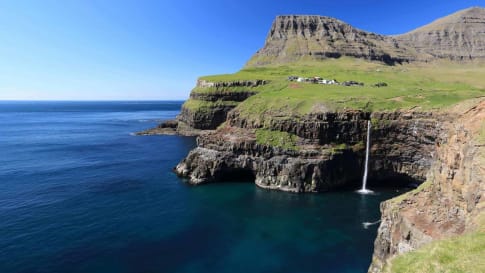
5 days
Apr, SepFaroe Islands Tour
Visiting Denmark
Few European tour companies offer small group journeys to the Faroe Islands. This five-day small group tour designed for mature couples and solo travellers. Local guides take you on trips off the beaten path to visit some of the islands' most stunning sights and to explore the capital of Tórshavn.
From A$7,250 AUD
View Tour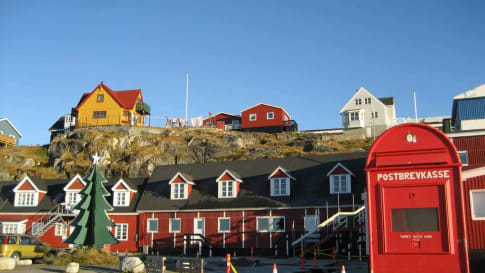
4 days
Sep, MayDiscover Greenland | Small Group Tour for Seniors
Visiting Greenland
Greenland is the largest island in the world, the majority of it lies above the Arctic Circle, and it is part of Denmark. Few places are quite so difficult to reach, we fly from Reykjavik to Nuuk. During this small group tour we have ensured that our travellers gets to this conversation-stopping land and, while we are there we obtain the most comprehensive overview of this vast landmass. We visit during the summer, experiencing the burst of seasonal flora, which caused the early voyagers to name it Greenland.
From A$6,450 AUD
View Tour

